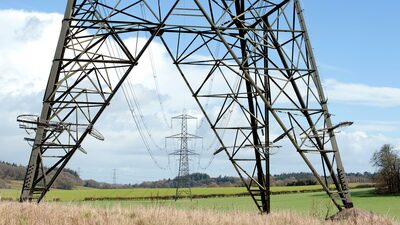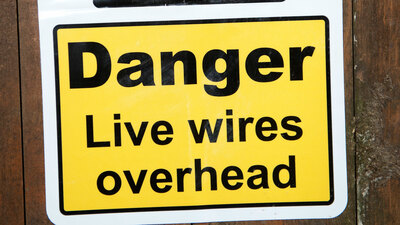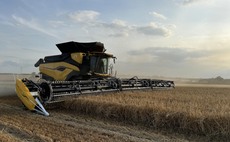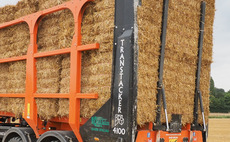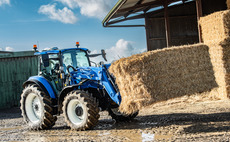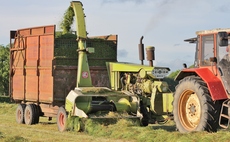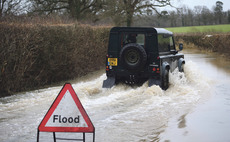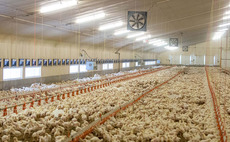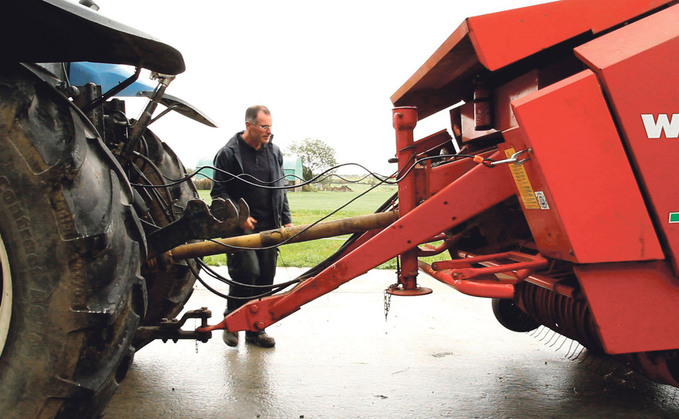
With more and more farmers working alone under the false impression they can and should do everything, Hannah Binns and Toby Whatley explore some of the dangers, especially when working with electricity.
�ļ�ֱ�� cannot and should not do it all
MANY farmers are working alone under the false assumption they can, and should, do it all, which, combined with ever-increasing pressures on-farm, creates a ‘cooking pot of potential trouble waiting to happen’, industry chiefs have warned.
It comes after 22 farm workers were killed on farms in England, Wales and Scotland in 2021/22, compared to 34 in 2020/21, new data from the Health and Safety Executive (HSE) has revealed.
In the last five years, 19 people were killed from falling from height, 10 from being trapped by something collapsing and three from contact with electricity.
Petra Martin, head of health and safety at Institution of Occupational Safety and Health rural industries group, highlighted lone working may be on the rise due to a reduction in manpower for financial reasons or a shortage of seasonal labour, with hours extended to compensate for this.
She said: “Maintenance work may be taken on in-house, rather than contracted out, to reduce costs, or simply because the relevant contractors are not available in time.
“Incidents involving working at height, with fire or electricity, often result in serious injury and have been the cause of many fatalities in agriculture.
“If they occur while working alone, the effects are often far worse than they might have been if others had been on-hand to provide immediate assistance.”
Stephanie Berkeley, Farm Safety Foundation manager, added lone workers have a responsibility to conduct their work in a safe manner and to co-operate with their employers.
She said: "We need to encourage everyone living and working in farming to rethink risk, carry out proper risk assessments for every job and put in controls which suit the circumstances of their own farm.
“Farming still has the poorest safety record of any occupation in the UK, so we need to challenge and change our attitudes and behaviours and make our farms safer places to work and live.”
Ms Martin highlighted there was no quick fix to making working alone safer.
She said: “It requires a robust and multi-faceted response from everyone in the industry.But farm managers and individuals can identify when lone working is not appropriate, such as when the risks are too high.
“For example, activities such as chainsaw work, working at height and working in confined spaces should all be undertaken with back-up in place, at least one other person, preferably two.
“Once a ‘no lone-working’ rule is in place for these tasks, it must not be broken, regardless of the situation.
“Too many incidents happen to people who know the risk, have foreseen the risk, but still make the decision in the moment to do it anyway.”
The risks from electric shock can be equally as deadly as those when working with machinery and animals, and the failure of electrical safety systems can result in serious fire risk.
Overhead and underground connections
The Health and Safety Executive has recognised the importance of understanding electrical risks on farms, dedicating a specific online area on understanding the hazards associated with working near overhead powerlines and underground cables.
Both of these services are owned and managed by the Distribution Network Operator.
Initially, the location, height and depth of these services can be obtained from contacting the Distribution Network Operator directly, which should be able to provide service mapping to identify the location of utilities.
It is important to remember that in some circumstances high-voltage overhead cables can arc when machinery gets too close, even if there is no physical contact with the cable itself.
The Health and Safety Executivehas advised the following activities are avoided whenever possible within 10 metres of an overhead powerline:
- Stacking bales, fertiliser bags or potato boxes
- Erecting temporary structures, such as polytunnels
- Folding sprayer booms
- Tipping trailers in fields
- Unloading or loading materials with a loader or telehandler
- Unloading combines
- Moving ladders and irrigation pipes
Common electrical issues and challenges found on farms
In addition to electrical supply utilities, the consumer electrical system within the farm itself can hide significant risks of electrical shock and potential causes of fire.
Edward Leake, of E.L. Electrical, specialises in the installation and repair of electrical systems on farms and rural businesses and has identified some common issues which should be addressed and understood.
He said: “On farms, electrics are often overlooked and do not receive the maintenance and inspection they require.The recommended frequency of inspection of installations by a qualified electrician is three years.
“Often it is much cheaper to carry out remedial works occasionally than trying to solve a big issue once a fault has occurred.”
Damaged or incorrect electrical connections and controls
Understanding the working environment and conditions and fitting the correct type of switch or connection is important.
Mr Leake said: “Domestic switches might be cheaper, but outdoor plugs and switches should be weather-proof to the correct IP rating.
“Damaged items should be replaced with a design suitable for the location and use.”
Extension leads used for permanent operation
Extension leads are designed for temporary use and should not be used permanently.
Cables trailing across floors are easily damaged when run over and partially unwound cables can present a serious fire risk.
If an electrical supply is permanently required in a specific location, invest in a dedicated supply which is rated for the load it requires.
Halogen lights fitted without lamp glass
Highly effective for luminating building and yards, halogen lights must be used with a glass cover over the lamp and surround.
Mr Leake said: “The operating temperature of the lamp is very high and can explode when it fails.
“Without the glass on the front of the fitting, the hot fragments can be thrown from the unit, creating a significant fire risk, particularly in buildings storing straw.”
Corrosion of connections and water ingress
Connections and equipment exposed to the weather can be subject to water ingress over time.
Water collecting or in contact with equipment can corrode connections, preventing their function, or can create a short-circuit fire risk.
Vermin damage
The combination of ample feed and warmth make the less accessible parts of farm buildings attractive to vermin.
Unfortunately, these areas are also used to route cables to connect sockets and lighting.
Mr Leake said: “Gnawing and chewing through the insulation of cables can quickly expose the live core and create another fire risk.
“Fitting steel-wire armoured cables can prevent this, as vermin cannot access the live wires within the cables.”
Older buildings which use rubber insulated cables should always be rewired, since the insulation can crack and fall off and the natural rubber can be particularly attractive for vermin to eat.
Incorrect fuse size
More common in older installations, the fitment of the incorrect fuse size (or even a nail or fencing wire) can present a serious hazard in the event of an overload.
Mr Leake said: “With the incorrect fuse installation, overload of current cannot be prevented, which will quickly lead to an electrical fire.”
It is important to check the size or quantity of appliances which are using the supply are not overloading the connection, particularly if they are all used at once.
Building extensions and change of use
Before extending a building or adding additional services as part of a diversification, consult your electrical contractor to understand the additional demands which will be placed on the infrastructure.
Mr Leake said:“Just tapping onto an existing socket or lighting supply for a larger building can quickly cause an overload. Changes to the main connection to allow for the increased load, or possibly an increase in the supply from your Distribution Network Operator, may be required.”

